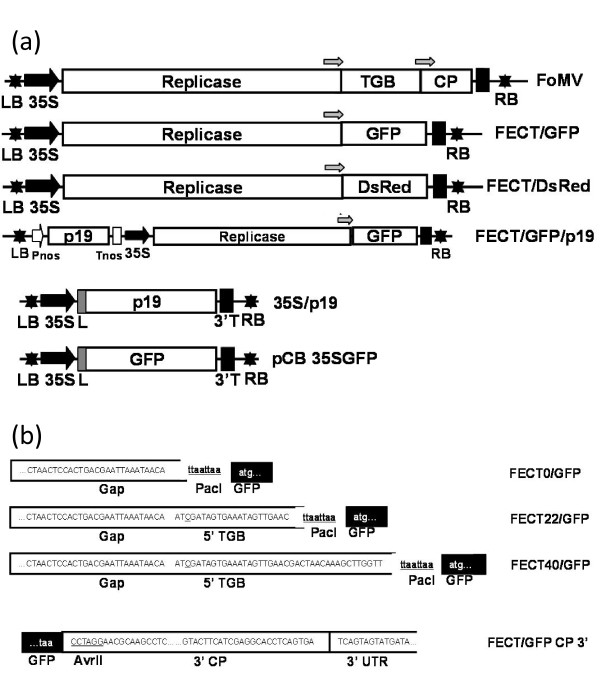Figure 3.
Schematic diagram of (a) the T-DNA and (b) control regions of the FECT vector series. (a) The native FoMV infectious sequence [28] was inserted into a JL22 binary vector as in Figure 1 and is represented here as "FoMV". The FECT series (Figure 2) constitutes the deleted FoMV vector. Various inserts were placed into the PacI/AvrII cloning site of FECT40 in this study. p19 silencing suppressor was added either in trans (via co-agroinoculation of a 35S/p19 construct) or in cis (in the same binary vector as FECT40, but with a separate promoter and terminator). Open boxes represent open reading frames; black stars: left border and right border of T-DNA; block arrows: CaMV duplicated 35S promoter; black boxes: CaMV 3' terminator sequence; gray arrows, subgenomic promoters; white arrow: nos promoter (Pnos); white box: nos terminator (Tnos); dark grey boxes: Tobacco etch virus 5' non-translated leader sequence (L); RB: T-DNA right border sequence; LB: T-DNA left border sequence; TGB: triple gene block; CP, coat protein. (b) Three different lengths of TGB1 subgenomic promoter were tested in their ability to drive GFP ORF expression. These were FECT0, FECT22 and FECT40 which included sequence extending 0, 22 and 40 bases, respectively from the first base of the TGB1 ORF. The start codon of TGB1 was mutated to ATC (underlined). Restriction sites PacI and AvrII were introduced at the flank of GFP ORF as cloning sites for other foreign inserts.

